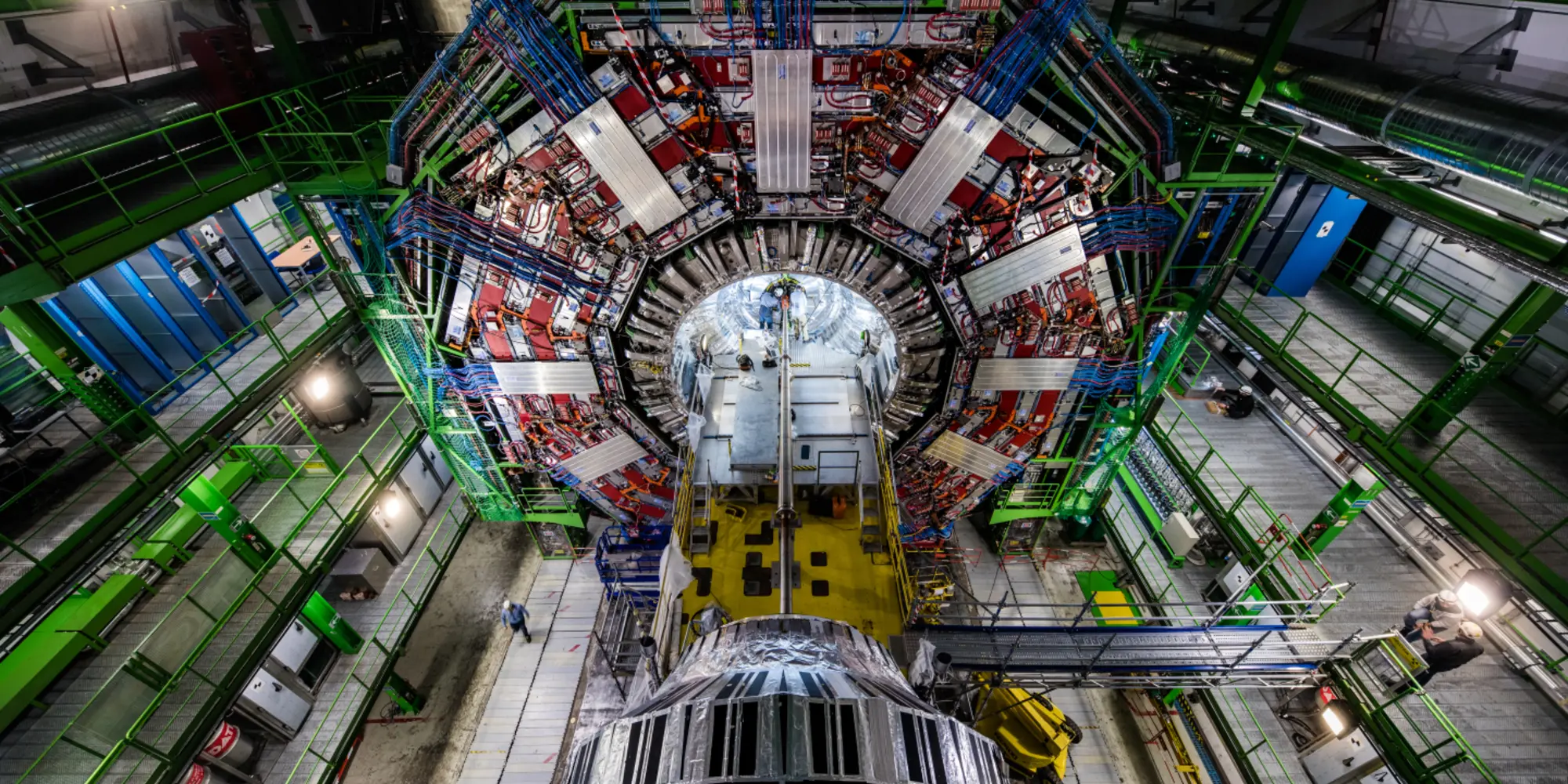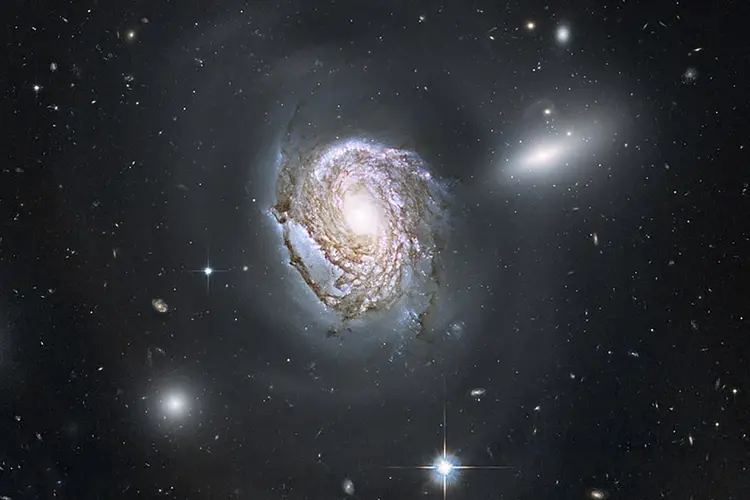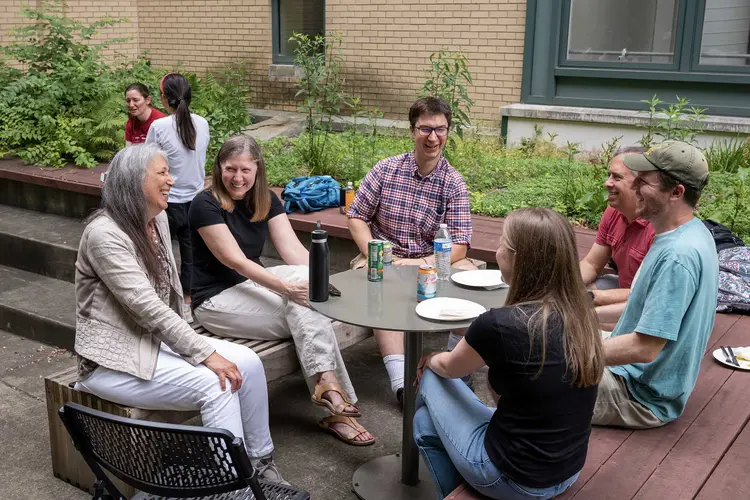
DOE Awards High-Energy Physics Researchers Nearly $5M
From quarks to quasars, the award supports Carnegie Mellon researchers investigating the standard model of particle physics
Media Inquiries
The Department of Energy (DOE) has awarded 12 Carnegie Mellon University Department of Physics(opens in new window) faculty members a $4.98 million grant to study high-energy physics (HEP). This grant is part of 80 years of near continuous support of high-energy physics research at Carnegie Mellon, with the last three-year grant awarded in 2020.
HEP is a wide-reaching field that investigates the fundamental building blocks of matter and their interactions in what is known as the standard model of particle physics. This research encompasses everything from the smallest elementary particles to the largest cosmological scales.
Awarded through the HEP program of DOE's Office of Science, the grant not only supports research at the Large Hadron Collider (LHC), the world's largest and highest-energy particle collider, but also research at other particle facilities as well as in cosmology and particle theory.
"In their goal to explore the elementary constituents of the universe, members of the HEP group at Carnegie Mellon collaborate outside of physics with researchers in statistics and machine learning in a typical CMU interdisciplinary fashion," said Professor Manfred Paulini(opens in new window), Mellon College of Science associate dean for faculty and graduate affairs and the principal investigator for the grant. "It is particularly encouraging to see some of our young faculty receive their first external funding through this grant renewal."
The award recipients include faculty from experimental and theoretical physics research backgrounds. Professors Scott Dodelson(opens in new window), head of the Department of Physics, and Rachel Mandelbaum(opens in new window), deputy department head, are cosmologists investigating dark matter, dark energy and the expansion of the universe.
"High-energy physics brings humanity's most powerful tools — our minds and facilities like the Large Hadron Collider — to address the most fundamental questions that can be asked: What is matter made of? What is in the universe and how did it form?" said Dodelson, who is co-PI on the grant. "CMU brings our specific expertise in computer science and artificial intelligence to make unique contributions to the large collaborations that study these questions."
Assistant Professors John Alison(opens in new window), Matteo Cremonesi(opens in new window) and Valentina Dutta(opens in new window) work with Paulini on the Compact Muon Solenoid (CMS) experiment at the LHC. The faculty members search for new particles with the potential to be candidates for dark matter that are not predicted by the standard model; and they study the Higgs boson, a particle which was discovered in 2012 and is essential to explaining why elementary particles have mass.
Cremonesi is a delegate for the CMS experiment to the LHC Dark Matter Working Group and uses machine learning algorithms to enhance the CMS experiment's potential to discover dark matter.
"This grant will give us the possibility to start a new activity on the upgrade of one of the most important components of the CMS experiment, its trigger system," Cremonesi said. "Using machine learning we will improve the capability of the trigger to select dark matter candidate events in real time."
Dutta also is interested in leveraging machine learning techniques to improve sensitivity toward new physics. A portion of the funding will support her work on the planned Light Dark Matter eXperiment (LDMX) that will search for light dark matter particles.
LDMX will be located at the Stanford Linear Accelerator Center (SLAC) in California and aims to decisively test a variety of scenarios with hypothetical light dark matter particles, which roughly have masses in the range between those of electrons and protons. The design for LDMX is being developed, with the goal of constructing the experiment and beginning operation in the next few years.
"This award from the DOE will support my group in contributing to the finalization of the LDMX design and playing a role in the activities toward building and running the experiment," Dutta said. "This work is highly complementary to my work on the CMS experiment at the LHC, where I also explore scenarios of new physics that could potentially provide an explanation for dark matter."
Professor Roy Briere(opens in new window), Associate Professor Diana Parno(opens in new window) and Dutta received funding for their work in the "intensity frontier." Briere explores the properties of particles containing heavy charm and beauty quarks, also known as "heavy flavor physics," while Parno is involved in the COHERENT collaboration, which studies the properties of elusive neutrino particles.
Finally, Assistant Professors Riccardo Penco(opens in new window) and Grigory Tarnopolskiy(opens in new window), Associate Professor Rachel Rosen(opens in new window) and Professor Ira Rothstein(opens in new window) — all theorists conducting HEP research — are engaged in phenomenological and formal work developing effective field theories. The effective field theory explains how the laws that govern a system taking into account the fact that we cannot know every small-scale detail of the system. Through the use of effective field theories, they aim to further the phenomenological understanding of the standard model and gravity, as well as phenomenological and formal work including subatomic physics, cosmology, black holes and even quantum phenomena in condensed matter systems.
The grant will fund two directions of Penco’s research. He will continue to explore a network of hidden symmetries of black holes, which he and collaborators helped uncover over the last couple of years. These symmetries explain, for instance, why black holes don't have tides like the earth does. The second direction is the study of various aspects of systems at finite density out of equilibrium using effective field theory techniques. Progress in this direction can also have implications beyond HEP.
"CMU's long-standing commitment to interdisciplinary research has given me the freedom to pursue my interests in different directions," Penco said. "The department and MCS have recently made substantial investments in theoretical physics, developing expertise in effective field theories and promoting collaboration across subfields. It's an exciting time to be a theoretical physicist at CMU."
Almost 80 Years of Funding
Carnegie Mellon has continuously received federal funding for high-energy physics research since the 1940s. After World War II, then-Carnegie Institute of Technology entered the emerging field of nuclear physics. A federal grant was given to establish a Nuclear Research Center facility in Saxonburg, Pennsylvania, which included a synchrocyclotron particle accelerator that, at that time, was one of the two highest-energy accelerators in the world. Over a period of 10 years this laboratory carried out extensive basic research into the properties of nuclear and subatomic particles. Read more
International Partnerships
Carnegie Mellon conducts high-energy physics research through collaborations around the world. In addition to the LHC at CERN in Switzerland, the faculty supported on this grant are involved with the Belle II detector in Japan, the COHERENT experiment at Oak Ridge National Laboratory in Tennessee, and the upcoming Vera C. Rubin Observatory under construction in Chile.


